Santo Antão, Cabo Verde
Santo Antão (Portuguese for "Saint Anthony"), or Sontonton in Cape Verdean Creole, is the westernmost and largest of the Barlavento islands of Cape Verde. The nearest main island is São Vicente to the southeast, separated by a channel named Canal de São Vicente. It is the westernmost large island in Cape Verde and the continent of Africa, and the second largest in Cape Verde.
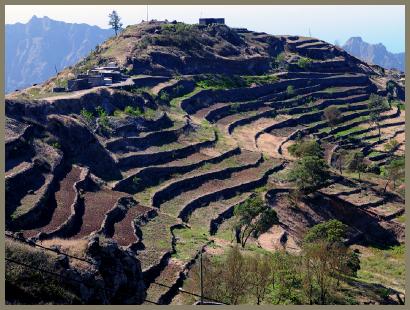 The island, entirely made up of volcanic material. The tallest mountain is Topo de Coroa, reaching a height of 1,979 m. The second tallest is Pico da Cruz at 1,585 m. The island is divided into north and south by a mountain range long considered impenetrable but now crossed by a road. The island’s main town is Ponta do Sol on the north coast, home to the Agostinho Neto Airport, while its ferry port is Porto Novo on the south coast. A part of the island in the southeast has an arid climate, while the northwest receives relatively normal precipitation. Its valleys are suffering heavy erosion.
The island, entirely made up of volcanic material. The tallest mountain is Topo de Coroa, reaching a height of 1,979 m. The second tallest is Pico da Cruz at 1,585 m. The island is divided into north and south by a mountain range long considered impenetrable but now crossed by a road. The island’s main town is Ponta do Sol on the north coast, home to the Agostinho Neto Airport, while its ferry port is Porto Novo on the south coast. A part of the island in the southeast has an arid climate, while the northwest receives relatively normal precipitation. Its valleys are suffering heavy erosion.
Bathing beaches and fishing areas are found in near Tarrafal de Monte Trigo.
The island is considered one of the most mountainous of Cape Verde. Its mountains are composed of basalt. Many of its volcanoes are young, especially its calderas. Since 1999, vulcanologists have observed continuous rising of the water temperature of the sea in the area of Ponta do Sol which may indicate the risk of a new eruption in the area.
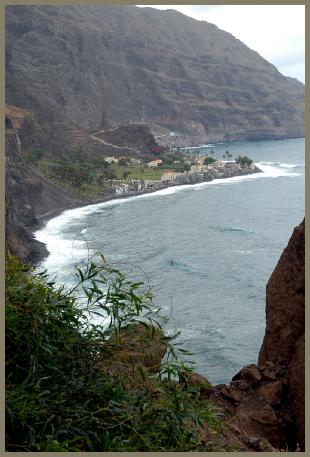
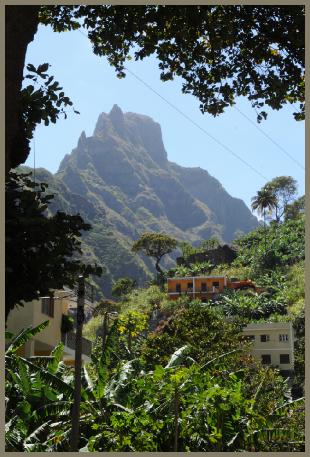
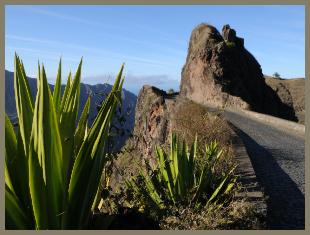
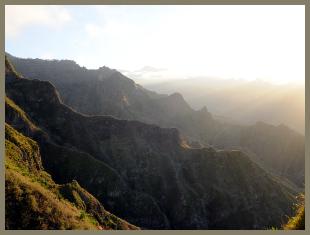
The island was discovered in 1462 by Diogo Afonso, but was not given its current name until around the 1500s. First inhabited in 1548, in the 17th century, people from the other islands of Santiago and Fogo along with people from northern Portugal arrived in today's Vila da Ribeira Grande in the northern part of the island. Later, wine and coffee became the most important exports on the island.
Fishing and agriculture are the main industries on the island.
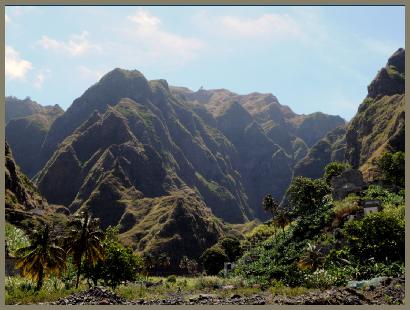 The island's agriculture products include sugar cane, yams, cassava, bananas, mangoes, and grain. The main product on the island is a kind of rum known as grogue.
The island's agriculture products include sugar cane, yams, cassava, bananas, mangoes, and grain. The main product on the island is a kind of rum known as grogue.
The exportation of many of the island's agriculture products to other islands has been prohibited for nearly two decades because of the millipede (Spinotarsus caboverdus) blight, but the government has announced it is going to lift the quarantine.
Tourism is becoming one of the most dominant industries on the island. There has been some investment in Rural tourism infrastructures.


